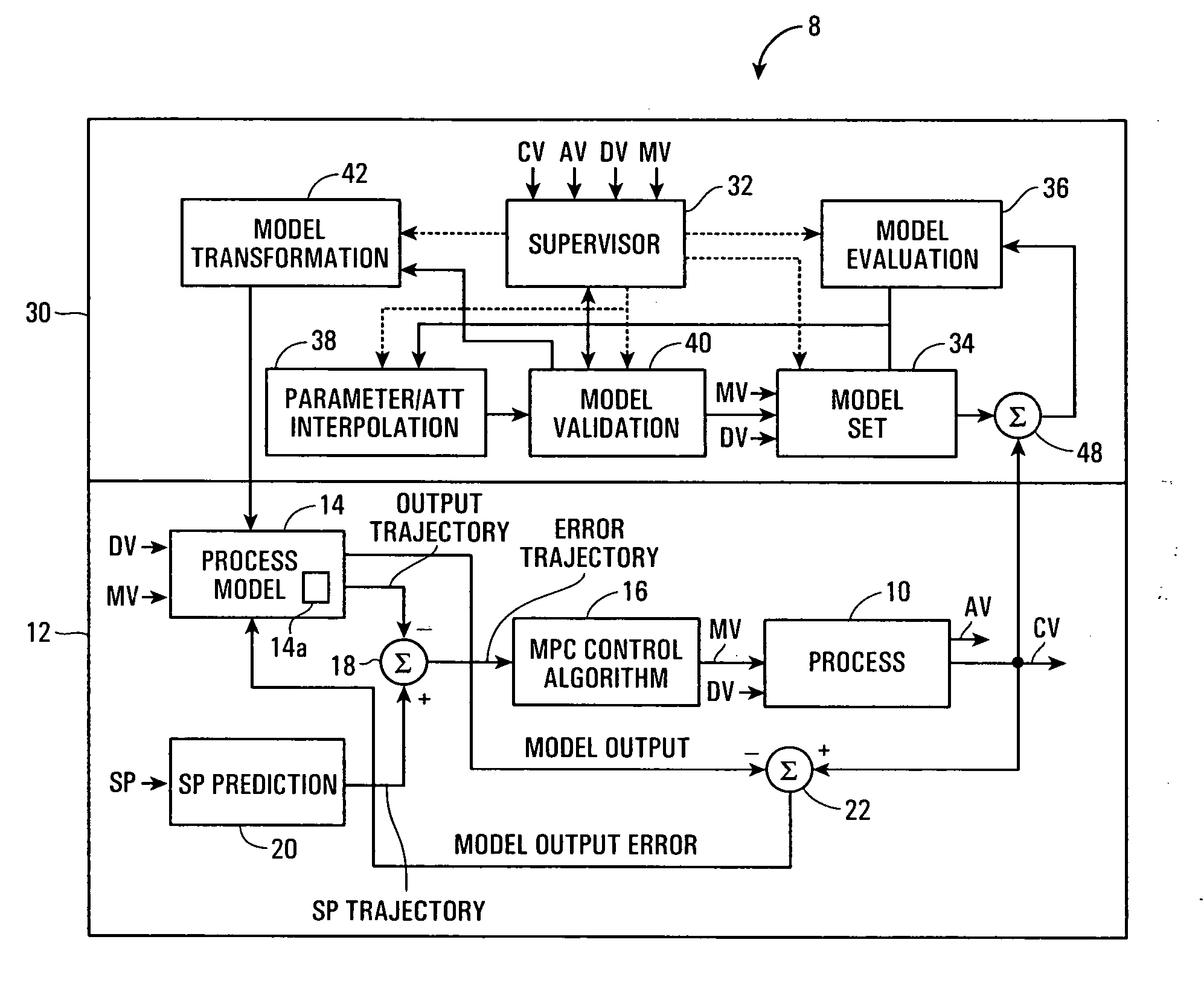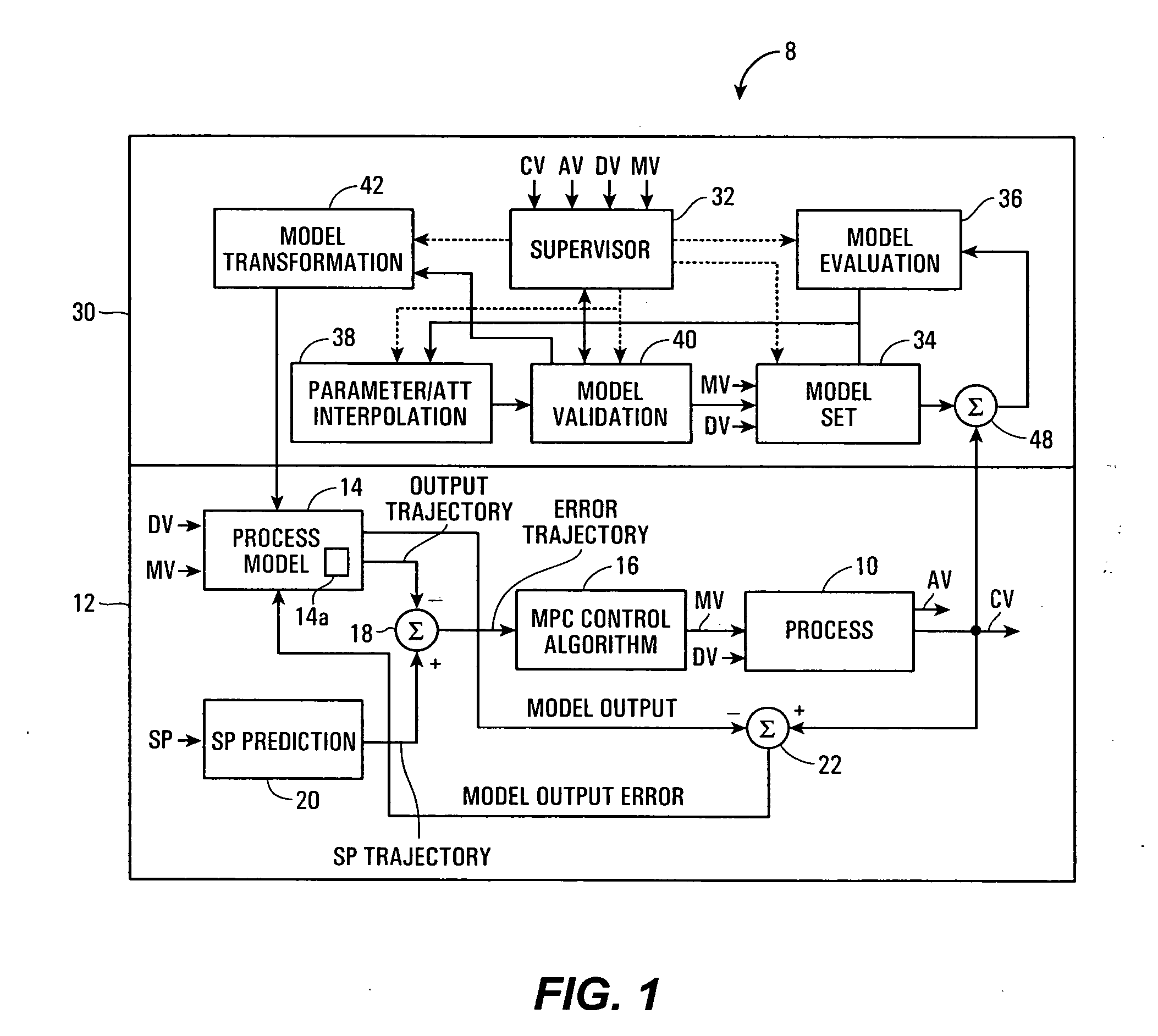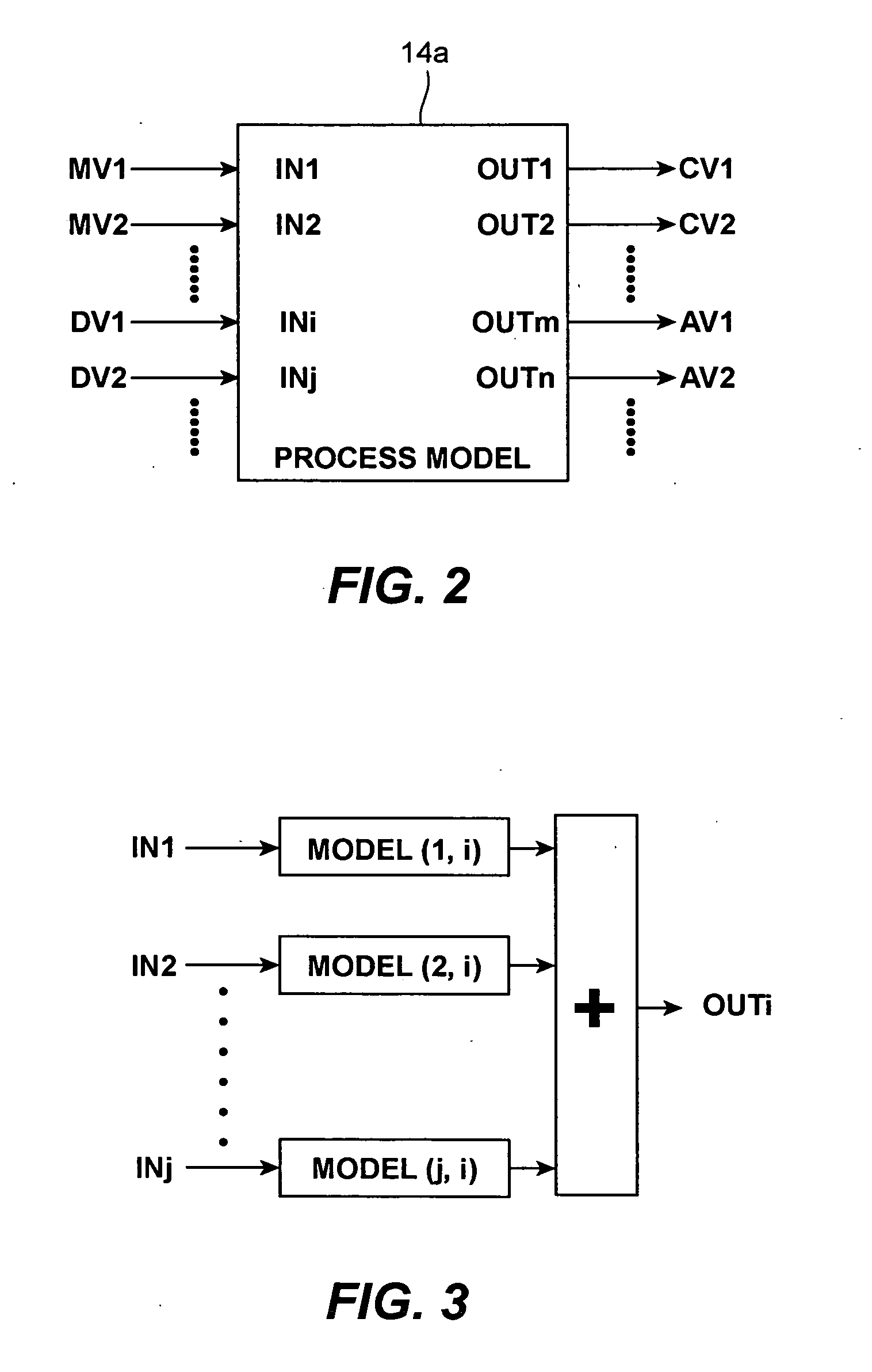Adaptive multivariable process controller using model switching and attribute interpolation
a multi-variable, process controller technology, applied in adaptive control, electric controllers, instruments, etc., can solve the problems of model based switching strategies, intrinsically poor tuning time performance, and overshadowing of prerouted controller tuning systems, so as to reduce modeling errors and improve control
- Summary
- Abstract
- Description
- Claims
- Application Information
AI Technical Summary
Benefits of technology
Problems solved by technology
Method used
Image
Examples
Embodiment Construction
[0025]FIG. 1 illustrates an exemplary adaptive multivariable process control system 8 that uses model predictive control (MPC) to provide multivariable control in a process 10. The control system 8 is somewhat similar in design to the feedback / feedforward (FB / FC) PID control system disclosed in U.S. Pat. No. 6,577,908, the disclosure of which is hereby expressly incorporated by reference herein. In fact, the control system 8 may use components of the PID control system disclosed in U.S. Pat. No. 6,577,908, as will be discussed in more detail herein.
[0026] As illustrated in FIG. 1, the adaptive multivariable control system 8 includes a standard or typical MPC system 12 having a process model block 14 coupled to an MPC controller 16 which produces manipulated variable (MV) signals used to control the process 10. Generally speaking, the process model block 14 includes a multivariable process model 14a which may be made up of a set of single input-single output (SISO) models, each of w...
PUM
 Login to View More
Login to View More Abstract
Description
Claims
Application Information
 Login to View More
Login to View More - R&D
- Intellectual Property
- Life Sciences
- Materials
- Tech Scout
- Unparalleled Data Quality
- Higher Quality Content
- 60% Fewer Hallucinations
Browse by: Latest US Patents, China's latest patents, Technical Efficacy Thesaurus, Application Domain, Technology Topic, Popular Technical Reports.
© 2025 PatSnap. All rights reserved.Legal|Privacy policy|Modern Slavery Act Transparency Statement|Sitemap|About US| Contact US: help@patsnap.com



